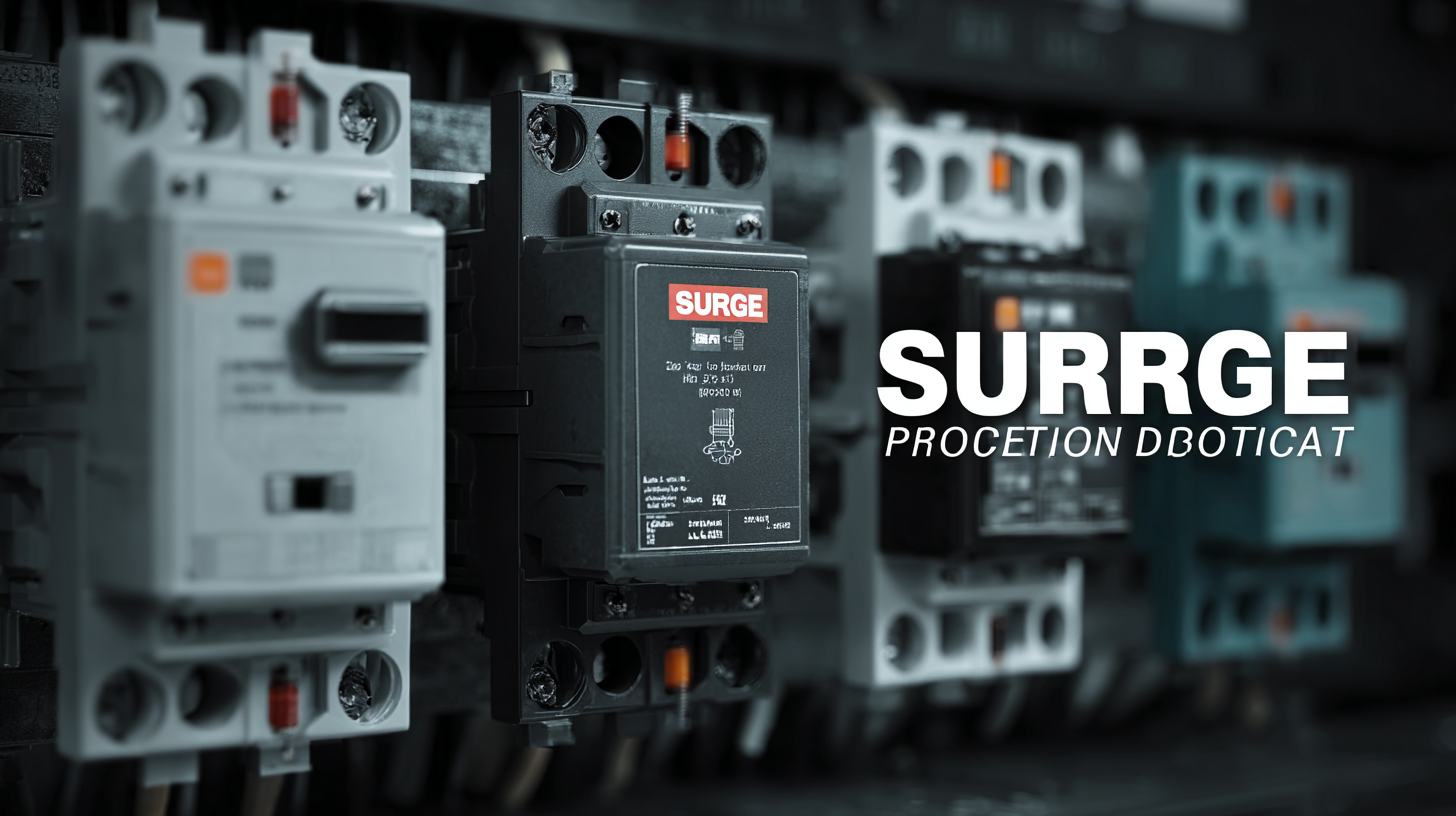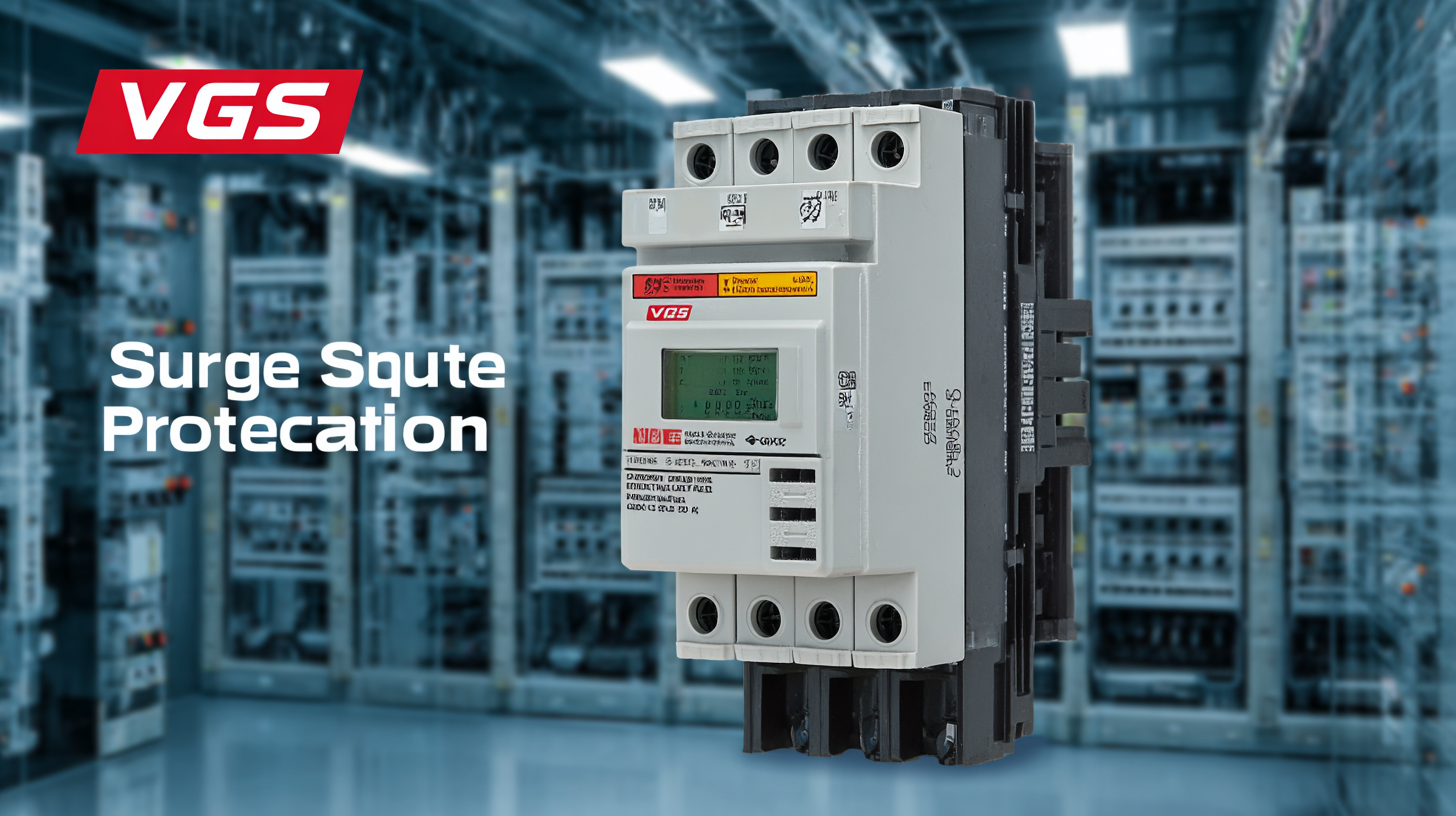
Finding the Right Manufacturer for Best Surge Protection Device a Comprehensive Guide
In today's technology-driven world, the need for reliable electrical safety measures has never been more critical, and a Surge Protection Device (SPD) stands out as an essential component in safeguarding both home and industrial systems. With the increasing frequency of power surges caused by lightning strikes, utility switching, or even internal issues, investing in a high-quality SPD can protect sensitive electronic equipment from costly damage.

However, with countless manufacturers in the market, finding the right one can be a challenge. This comprehensive guide is designed to simplify your decision-making process, offering insights into key factors to consider, from product specifications and certifications to pricing and customer support. By equipping yourself with the right knowledge, you'll be well-prepared to select a Surge Protection Device that not only meets your needs but also ensures the protection and longevity of your valuable electronics.
Identifying Key Industry Applications for Surge Protection Devices in Various Sectors
Surge protection devices (SPDs) play a critical role in safeguarding various sectors, particularly amidst the increasing reliance on electronic devices in residential and commercial environments. The demand for SPDs is continuously growing, with the global market projected to reach $3.6 billion by 2024. Furthermore, from 2025 to 2034, the compound annual growth rate (CAGR) is expected to be around 6.4%. This growth can largely be attributed to the heightened vulnerability of today’s electrical and communication systems, especially with advancements in technology.

In sectors like renewable energy, particularly solar photovoltaic (PV) systems, the risks associated with surge events due to lightning and other atmospheric conditions are significant. PV systems are often installed in open spaces or on rooftops, making them susceptible to surges caused by charged storm clouds. Recent studies have shown that effective SPD implementations are vital for protecting these systems and ensuring operational stability. As industries acknowledge the importance of surge protection, identifying key applications and suitable manufacturers becomes paramount for ensuring reliable protection in various sectors.
Understanding Surge Protection Device Ratings: What Manufacturers Should Know
When choosing a surge protection device (SPD), understanding its ratings is essential for manufacturers to ensure optimal performance and safety. The primary ratings to consider include voltage protection rating (VPR), surge current rating, and response time. The VPR indicates the maximum voltage that can be applied before the protective device activates, ensuring that connected equipment is safe from potentially damaging surges. Manufacturers should carefully assess this rating to align with the specifications of their products and the environmental conditions in which they will operate.
Another crucial element is the surge current rating, which reflects the device's capability to handle transient surge currents without failing. This rating is often measured in kiloamperes (kA), and a higher rating typically translates to better performance during high-energy events, such as lightning strikes. Additionally, the response time of the SPD is vital; a faster response minimizes the time equipment is exposed to harmful surges. Manufacturers must prioritize these critical specifications when developing or sourcing SPDs, ensuring that they meet industry standards and provide reliable protection for consumers.
Understanding Surge Protection Device Ratings
Evaluating Manufacturer Certifications and Compliance Standards for Quality Assurance
When selecting a manufacturer for surge protection devices, evaluating their certifications and compliance standards is essential for ensuring quality assurance. Manufacturers that uphold stringent environmental and social standards demonstrate a commitment to responsible practices, which can significantly impact the quality and reliability of their products. By scrutinizing these certifications, buyers can gain valuable insights into the manufacturer's operational integrity and product safety protocols.
Recent advancements in regulatory compliance, such as new Good Manufacturing Practices (GMP) certifications, highlight the importance of rigorous quality assurance processes. These certifications not only help manufacturers adhere to FDA guidelines but also instill confidence among consumers regarding the safety and efficacy of the products they rely upon. Buyers should look for manufacturers who are transparent about their compliance efforts and are proactive in addressing industry standards. This approach ensures that the devices supplied will meet the demands of both regulatory frameworks and customer expectations.
The Role of Surge Protection in Industry-Specific Scenarios: Case Studies and Insights
In today's fast-paced technological landscape, surge protection devices (SPDs) play a pivotal role across various industries. Different sectors face unique challenges when it comes to protecting sensitive equipment from voltage spikes. For instance, in the manufacturing industry, sudden surges can lead to significant downtime and financial loss. A case study involving an automotive plant highlighted how implementing robust surge protection strategies mitigated severe damage to machinery, ultimately enhancing operational efficiency.
Similarly, in the healthcare sector, where life-saving devices are in constant use, surge protection takes on a critical dimension. Hospitals rely heavily on sophisticated equipment that is sensitive to electrical fluctuations. An analysis of a regional hospital’s experience revealed that after upgrading their surge protection systems, they not only safeguarded their medical devices but also improved overall patient care. These insights underline the necessity of tailored surge protection solutions in industry-specific scenarios, emphasizing that a one-size-fits-all approach is inadequate for effectively shielding vital equipment from potential threats.
Cost-Benefit Analysis: Investing in Reliable Surge Protection Devices for Long-Term Savings
When considering surge protection devices (SPDs), a thorough cost-benefit analysis is essential. Investing in high-quality surge protection devices may seem like a significant upfront expense, but the long-term savings can be substantial. By protecting your electronic equipment and appliances from voltage spikes, you not only extend their lifespans but also avoid costly repairs or replacements that could arise from inadequate protection.
Moreover, reliable SPDs can help prevent data loss and downtime in both residential and commercial settings. In a world where technology is integral to daily operations, safeguarding your investment with quality devices means protecting your productivity and ensuring continuous performance. While budget options may be tempting, the lower level of protection they provide can lead to higher costs in the event of an electrical surge. Therefore, opting for dependable, well-manufactured surge protection devices is a sound financial strategy that pays off in the long term.

